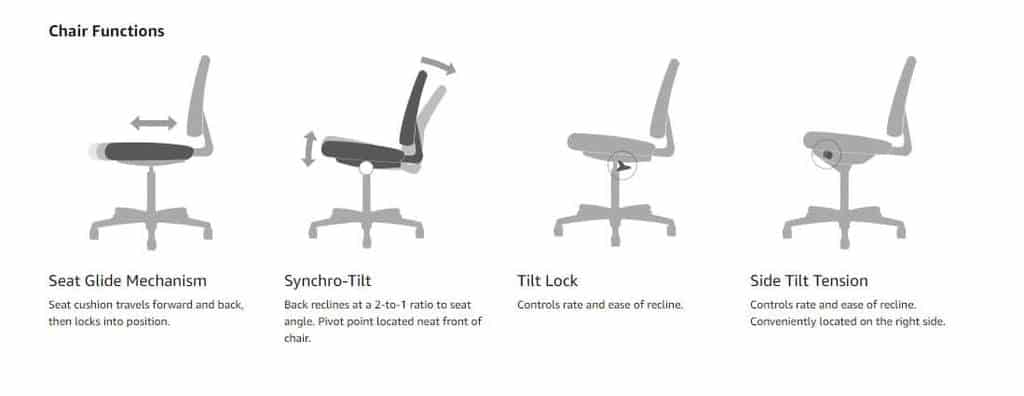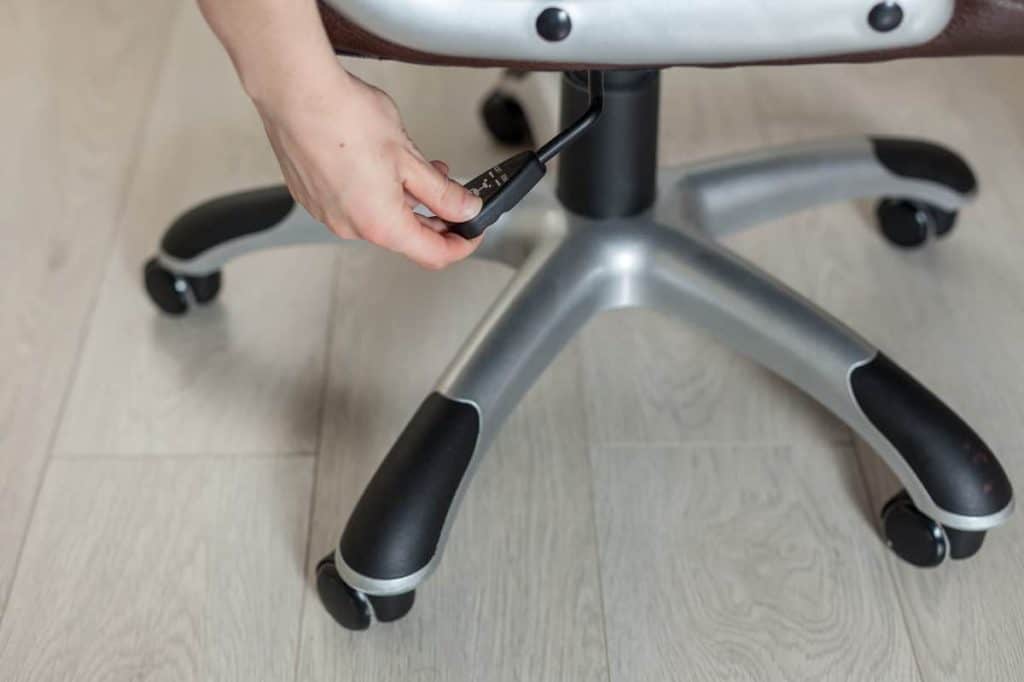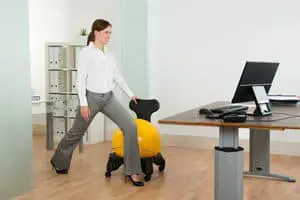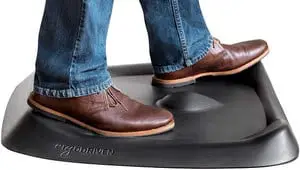It’s well-documented that living life with minimal physical activity will have negative effects on your health. Sadly, the average person who works in the office spends around six hours a day sitting down.
This does not include the hours one might spend sitting down on the way to work, and some more at home while watching TV, before finally lying in bed all night.
For those of you who spend many hours sitting down while working, the least you can do is to get an ergonomic office chair, as it allows you to adjust the seat to suit your needs. However, many people don’t have an idea of how to set their office chairs properly.
Don’t worry, we got you covered. In this post, we will show you how to adjust your office chair seat angle. But first, it’s a good idea to go over the correct sitting posture.
At Office Solution Pro, we are passionate about Ergonomics! Our readers support the page. If you click on a link, we may earn a small commission at no cost to you. We hope you love the products we recommend as much as we do!
Correct Sitting Posture
Making simple adjustments to the way you sit will help you work comfortably throughout the day.
One thing to take note is, you cannot align your body in a fixed position all day long and expect to stay healthy. Many would suggest that the correct sitting posture is to have your back upright, with your feet firmly on the ground and your knees bent at 90 degrees.
While this is correct to a certain extent, it is not completely accurate.
The key to ergonomic seating is to involve periods of short walks and stretching between the hours of sitting down. It is important to change your posture throughout the day to avoid being in a fixed position for too long. All the while, remember to keep your body straight and your chair well-adjusted.
Making the Necessary Adjustments
Your sitting posture has a significant effect on your health, so investing in a chair that will provide the necessary support while being comfortable is important.
The seat should match and support your entire body. Follow these steps to find the most health benefits from your office chair. These steps will prevent lower back pain, and help you achieve the perfect posture.
1. Adjust the Chair Height
An office chair with pneumatic seat height adjustment simply adjusts the height of your seat by lowering or lifting it up. By finding the comfortable height, your chair will provide an ergonomic seating position depending on how tall you are.
If you are shorter than average, it’s a good idea to find the right office chair that supports your height.
A pneumatic cylinder attached to the seat controls the lift and drop action which is triggered by a lever often located on either side of the seat. The lever is usually on the right side of the chair, with up/down arrows.
Adjust the height of the chair so that your elbows are level with the desk height. If you are using an adjustable standing desk, set the chair to the most comfortable height, then adjust the desk to elbow height.
2. Adjust the Chair Angle
An ergonomic office chair provides the option to change the seat angle horizontally in a slightly angled manner. Sitting with a slight-forward position toward the desk will improve your back posture as it opens up your hips while relieving pressure from your glutes and under your thighs.

3. Adjust the Armrests
A lot of people wonder are armrests good for ergonomics. It depends, but the key thing is adjustability. To ease the pain from your shoulders, you should adjust the height of your armrests to align your wrists with your elbows.
Armrests create poor posture if they hinder an individual from sitting as close to the desk as they would like. To make sure that you can work with your arms relaxed and comfortable, adjust the armrests and position them so that they fit under the desk.
Another reason why you should get a chair with adjustable armrests is that your wrists should be level or slightly below your elbows when typing on a keyboard. Your arms should be wide enough to match your shoulder width.
4. Adjust the Backrests
A comfortable office chair has a well-shaped backrest cushioning. The most protruding part of this cushioning should fit into the low back – about waist level.
Many office chairs come with the option to adjust the backrest height. This is quite different from adjusting the chair’s height, as it involves changing the backrest as opposed to the whole seat height.
An adjustable backrest will help you find the right angle in accordance with your height to provide the best lumbar support.
Find an office chair with an adjustable headrest to give your head, neck, and shoulders the support they need for you to work comfortably.
5. Make Sure Your Feet are Firmly on the Ground
The best sitting posture requires both of your legs firmly grounded. Adjusting the seat depth can help move the seat cushion to fit your height accordingly.
Having the right foot support is important for lower back comfort and maintaining a good posture. An office chair with a small seat cushion can leave you sitting at the edge of your seat, which is bad for your back health.
If your feet aren’t firmly flat on the floor, you will need a footrest to improve your posture. The appropriate footrest will help you find the right foot elevation, leg and knee position.
If you are someone who needs a footrest, check out the best recommendation from us right here, it will definitely provide the proper adjustability and elevation for you.
6. Tilt, Tilt Tension, and Synchro-tilt
Tilt enables the user to rock the chair back and forth. This option is great for preventing back injuries by creating motion and enabling the user to move rather than staying in the same position over long periods of time.
Tilt tension controls the degree at which your chair rocks when tilted. It sets how much force you need to tilt your seat backward. By using a knob located underneath the chair, you can set the tilt tension accordingly.
A chair with synchro-tilt helps tilt the chair while keeping the seat cushion level with the ground. By making the backrest tilt faster than the seat cushion, the synchro-tilt will prevent the entire chair from rocking completely when tilted.
Newer versions of office chairs are starting to include this feature alongside the tilt function.

Where Should Lumbar Support Hit Your Back?
Having the proper back support is imperative for physical longevity. This is the reason why many people who are looking to invest in the right ergonomic office chair seek out an adjustable lumbar support feature.
Do keep in mind that the proper placement and adjustment of the lumbar support is just as important as the inclusion of the feature.
Remember, the lumbar support should fit right in with the natural curve of your back, directly above your belt line, so that it can maintain the normal curve of your lumbar spine.
Some chairs have independent adjustments, while some have built-in adjustments so you can adjust both the lumbar support and the height of the backrest at the same time.
Useful Tips
- Maintaining proper sitting posture is important, but it isn’t enough; you have to move around throughout the day to avoid muscle pain and stiffness. Maintaining one position for a long period of time is not ideal.
- Before buying a new office chair, it is important to do your research. This will allow you to understand all the options the chair has to offer; therefore, you will get maximum benefits. We have made a comprehensive guide of the best ergonomic office chairs in the market — complete with a buyer’s guide — just for you.
- Read the chair’s manual thoroughly to learn everything about the adjustments and different options.
- Consider investing in a standing desk to alternate between sitting and standing while working. Changing things up in the office is great to ensure that you get enough movement throughout your day.







